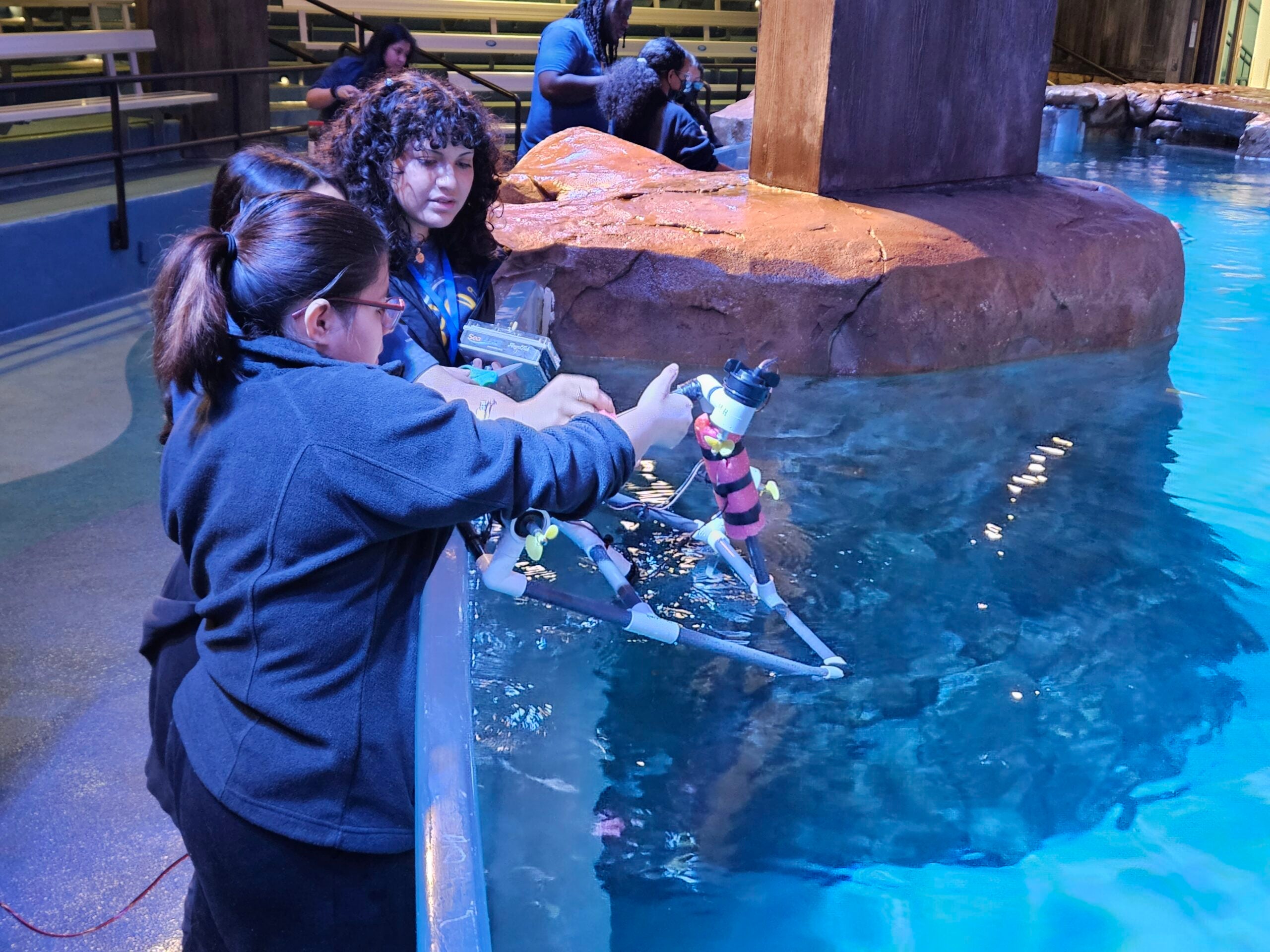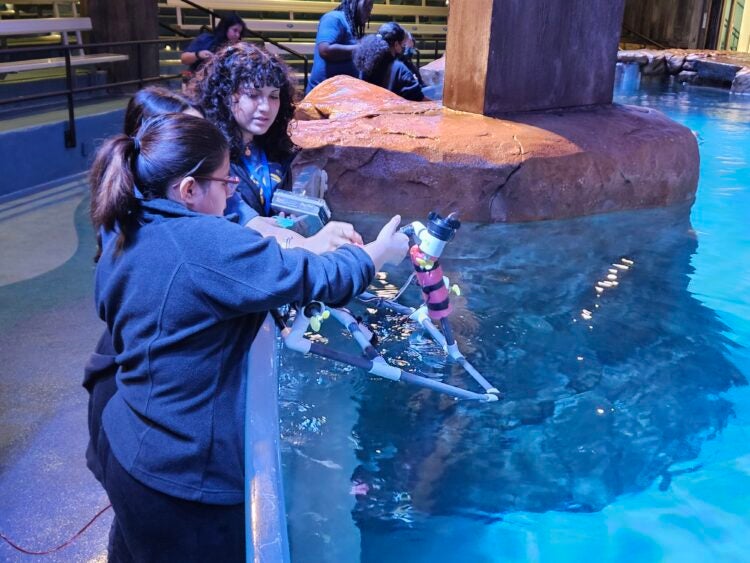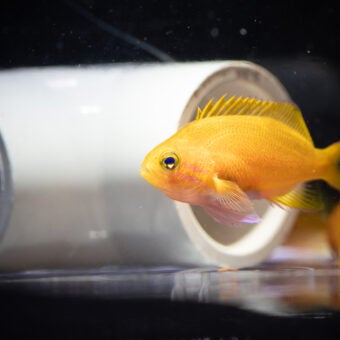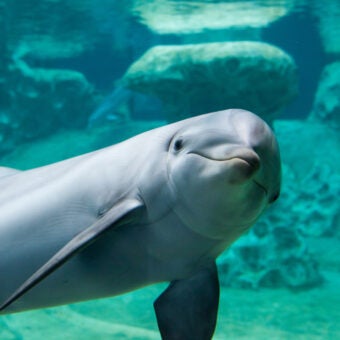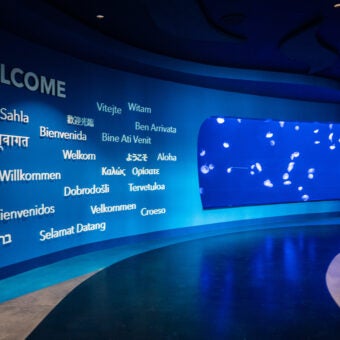Teaching the next generation of aquatic engineers: Georgia Aquarium’s ROV camp hosted a group of girls from Sweetwater Middle School.
By Billie Snieder, environmental educator, Georgia Aquarium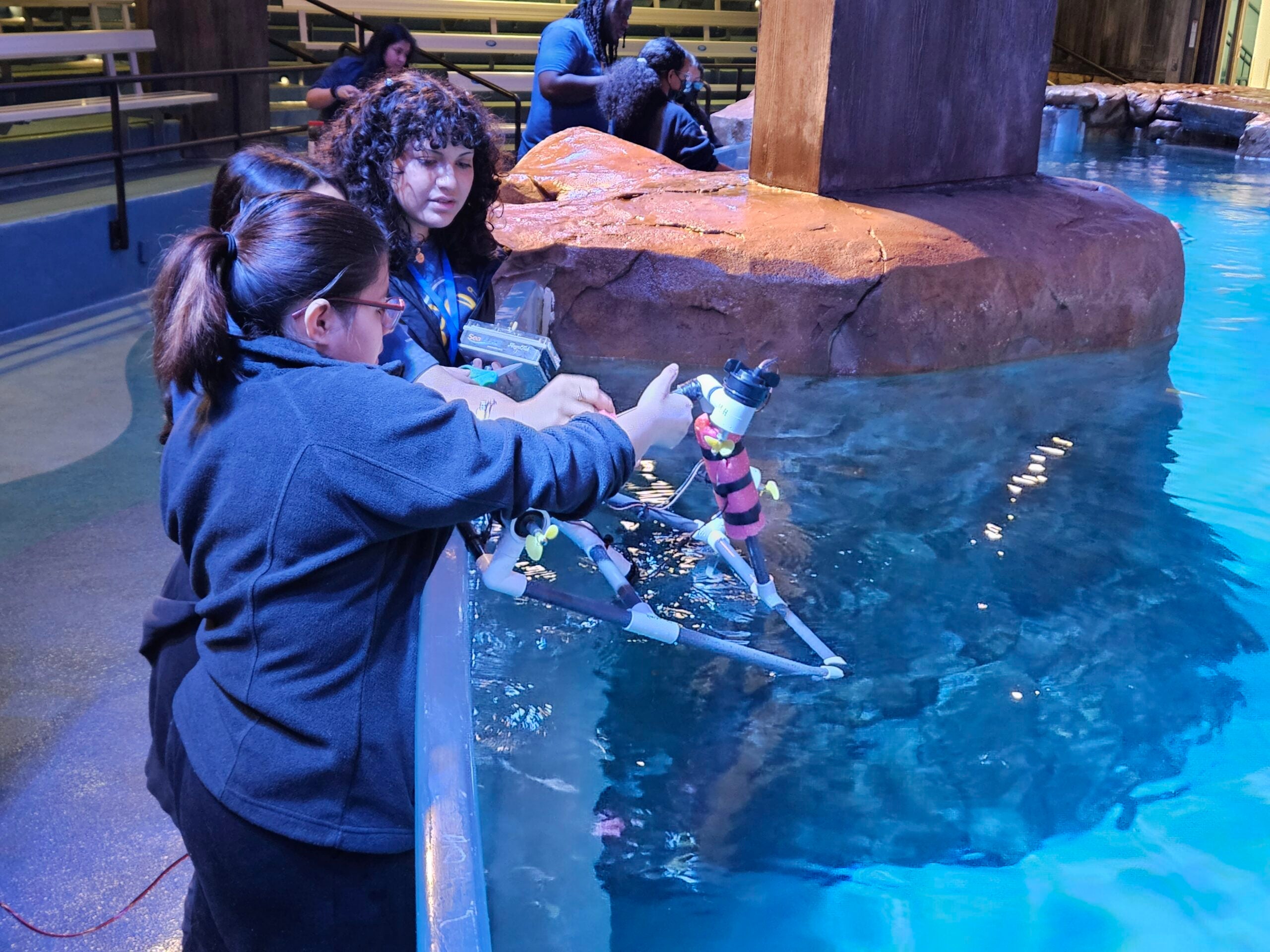
Have you ever wondered how remote-operated vehicles, or ROVs, are used by scientists to collect data or various samples? Maybe, you are curious how engineers build and fly ROVs in the ocean? Or what challenges they face while building and navigating ROVs? These were some of the questions asked by a group of twelve middle school girls from Sweetwater Middle School during Georgia Aquarium’s ROV camp.
Over the course of five days, these students learned various engineering skills that allowed them to design, assemble, and operate an ROV. They learned how engineers brainstorm solutions by creating, testing, and improving a design. During the first two days, students learned how to strip, splice, and solder wire. They also learned how to ensure their connections were waterproof. Students practiced their navigation skills by flying drones. These skills were then applied to the actual construction of their ROVs. They were able to assemble the control box and attach it to the tether and propellers.
Once the main parts of the ROV were complete, each group designed and built the frame. All four groups were able to take their design from a paper sketch to a finished 3D shape. Taking into consideration the materials available and the need to be waterproof. Led by Georgia Aquarium Environmental Educators, these students were able to integrate STEM skills to complete their Angelfish ROVs from the Marine Advanced Technology Education center (MATE).
The benefits of working in groups, was seeing the different methods of problem-solving and design strategies. They also showed encouragement to one another as they practiced their newly learned skills. Each ROV was uniquely designed, with several different shapes being utilized to construct their frames. Each group faced the challenge of balancing three propellers on the frame, while preventing the ROV from tipping over once submerged.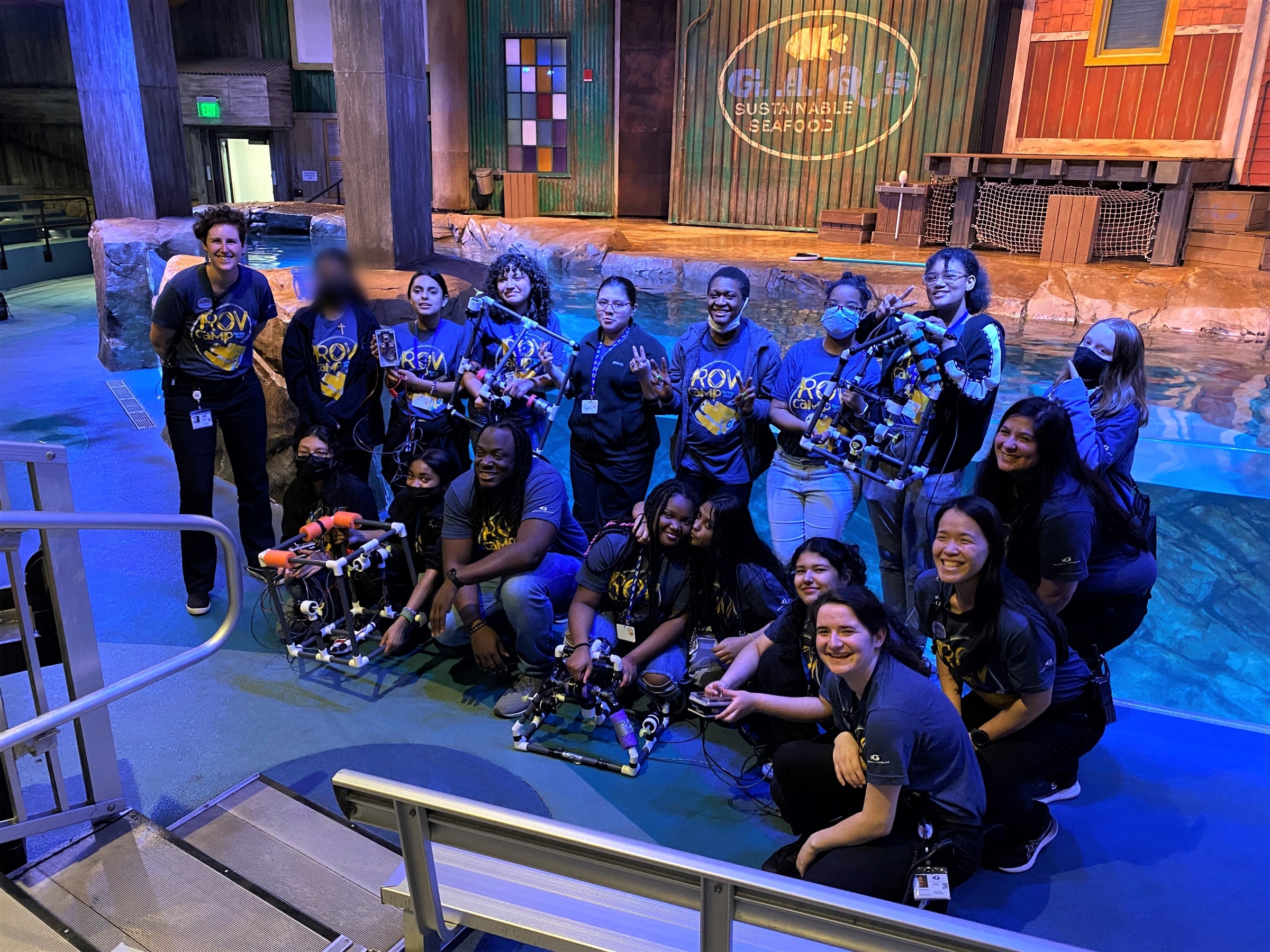
These students also had the opportunity to hear from several women in STEM careers. From how ROV engineers utilize biomimicry to design devices that look or act like animals, to understanding how constraints impact design choices. These speakers encouraged the girls to embrace challenges, learn new skills, and pursue their dreams in the STEM field. The students explored the science behind buoyancy and used technology to create a functioning control box. They also applied the engineering design process and geometry skills to construct their frames from PVC pipes. Students also learned how ROVs are tools that help scientists explore the ocean, aid in clean-up projects, and collect data/samples.
The highlight of the week was seeing the students finally test their ROVs in the water. Each group piloted their ROVs in the Sea Lion Pier 225 gallery pool. The groups made a few final adjustments to maintain negative buoyancy. Then all four ROVs were able to successfully navigate and explore the pool. The groups even practiced landing the ROVs on a specific target area. The biggest challenge they faced during this portion of the camp was finding ways to improve the design. One common fix was removing materials to make the ROV less buoyant to navigate more easily through the water column. This gave the students an excellent opportunity to practice the engineering design process as they tested and improved their designs.
Opportunities for exposure to STEM careers are important for young girls, especially young girls of color. Exposure to new career fields like this can spark a newfound passion for science and engineering. These skills are also extremely valuable regardless of the career they pursue as they learn to problem solve, identify roadblocks, and collaborate with others. One of the biggest takeaways from this was how empowering it can be to work with a team of all women in a traditionally male-dominated field. One of the goals of this camp is to help build not only competency but also confidence in the student’s abilities. As these students continue their education, we hope they will not only continue to pursue their dreams but also share their knowledge and skills as they inspire more young girls, and young girls of color, to join STEM fields.
